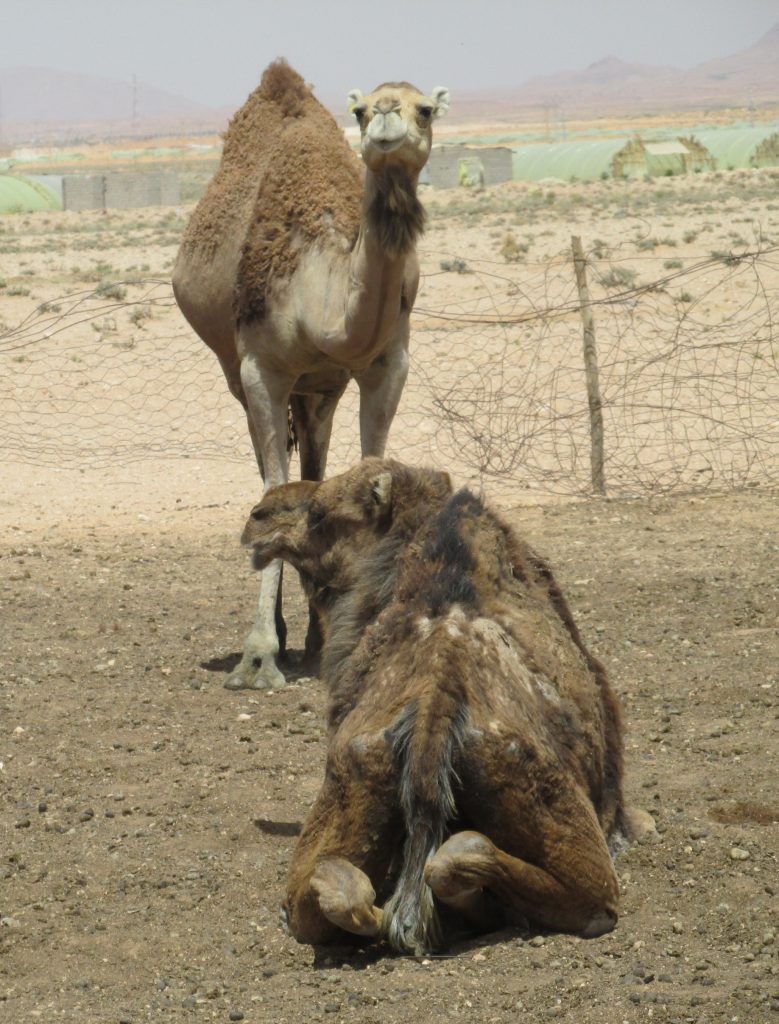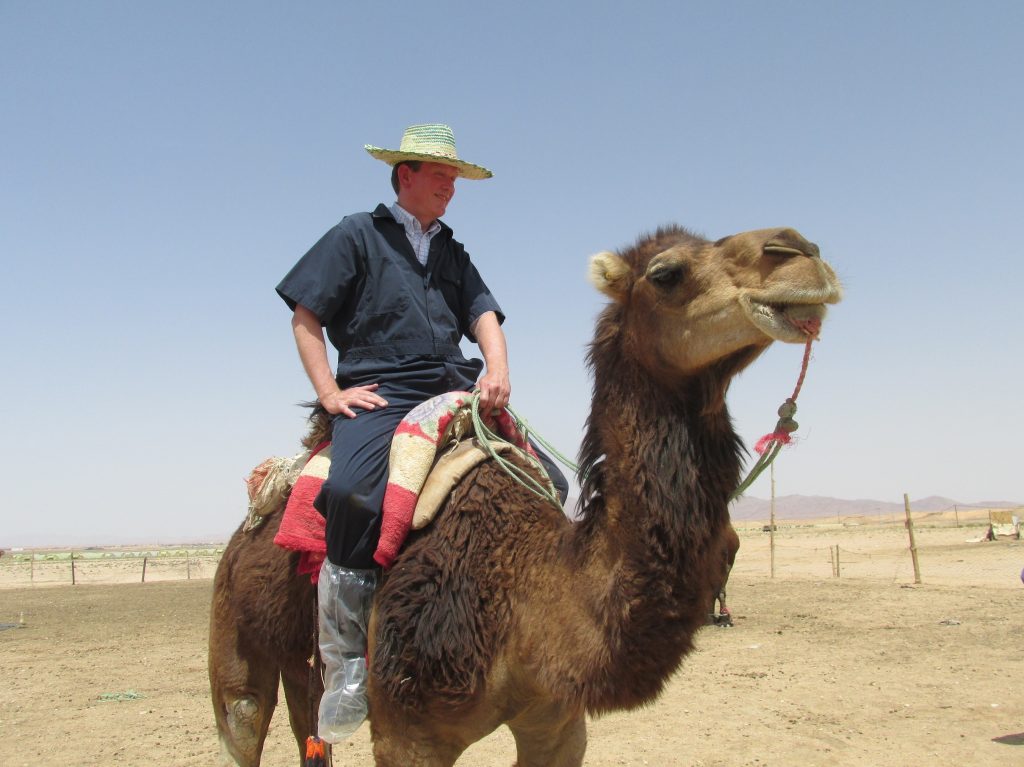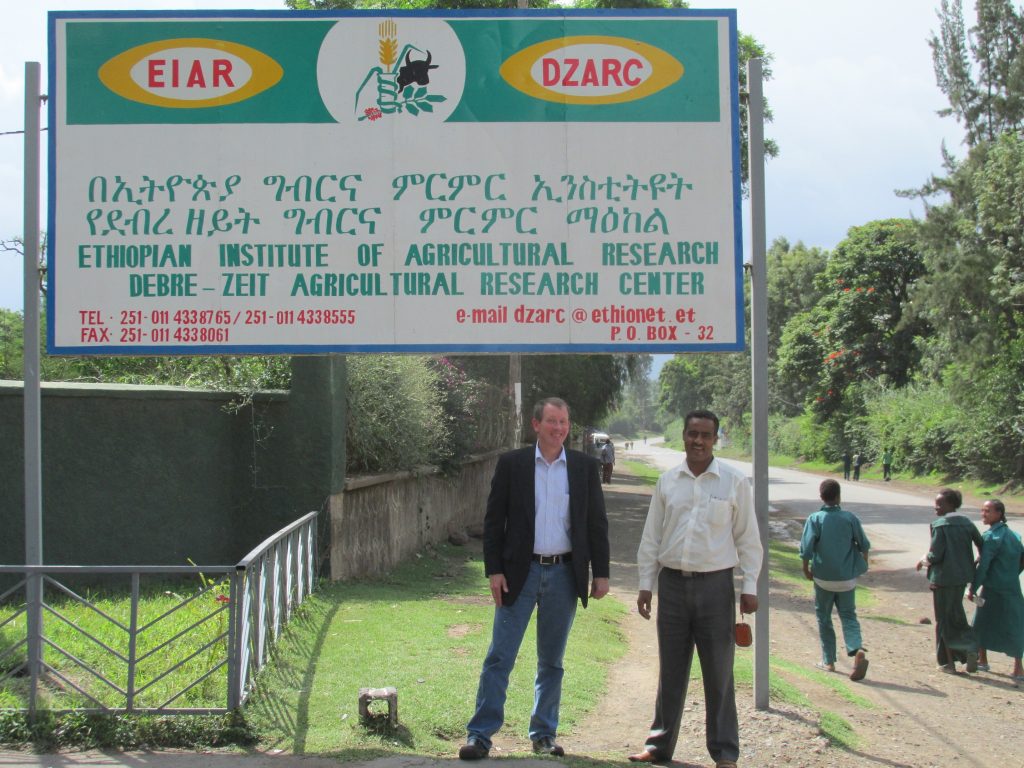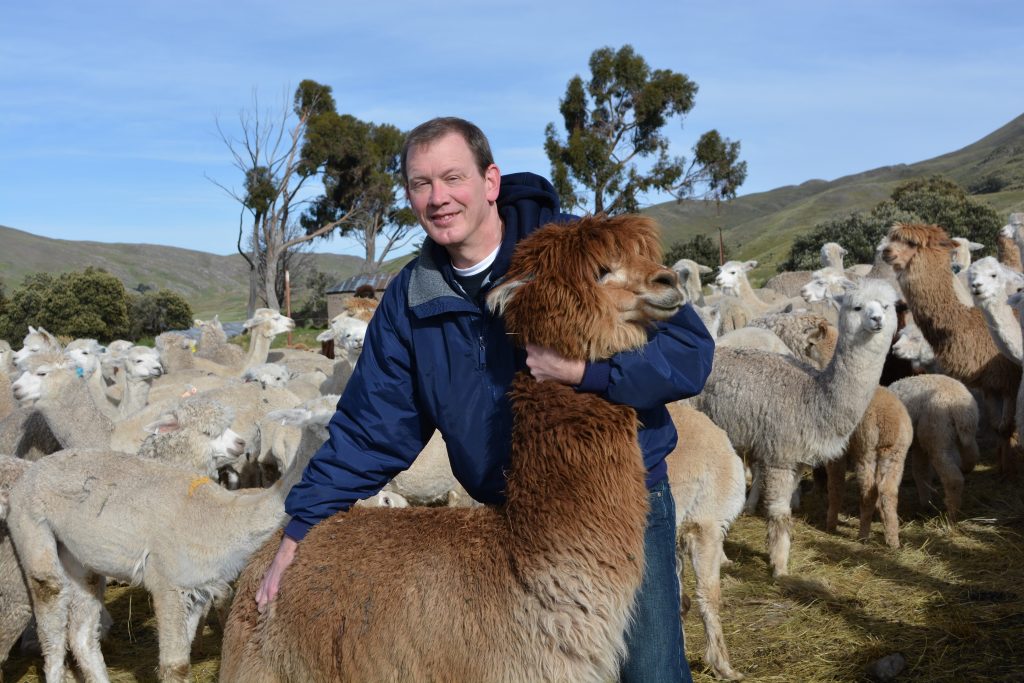Dr Curtis R. Youngs – Improving Livestock Through Reproductive Technologies
Reproductive biotechnologies have contributed to many major advances in livestock production, and the proper application of these technologies can lead to livestock with superior genetic traits. This is vitally important given the high rates of malnourishment and poverty in developing countries, where communities could greatly benefit from an increase in meat and dairy products. Collaborating with scientists across the world, Dr Curtis R. Youngs of Iowa State University aims to increase the production of animal-derived foods in developing nations by applying reproductive biotechnologies to improve the efficiency and sustainability of livestock production.
Tackling Poverty and Malnutrition
Food insecurity impacts a third of the world’s population and is hardest felt in developing nations. As the global population continues to soar, so too does the demand for protein, such as meat and dairy products, further threatening food security.
Livestock contribute directly to the livelihoods of families across the world by providing food, fibre such as wool, and income from selling these products. Livestock breeding on rural farms in developing countries is usually not highly organised, meaning that farmers are not achieving the full genetic and reproductive potential of their animals.
Enhancing the genetics of livestock through reproductive biotechnologies is a promising approach for improving the future livelihoods of farmers in developing countries. Such technologies include artificial insemination, in-vitro fertilisation, embryo transfer and pregnancy testing. Harnessing these methods would allow farmers to achieve herds consisting of healthier and more productive animals, and contribute to reducing malnutrition in their local communities. For instance, the use of artificial insemination in developed nations has boosted productivity in livestock, thereby allowing farmers to produce more food.
Dr Curtis Youngs of Iowa State University is working to help farmers in developing countries keep up with the increasing demand for animal-derived foods. By using a variety of reproductive biotechnologies to breed healthy, efficient and robust livestock, his team aims to reduce hunger and poverty in developing areas.
Their work will also reduce the environmental impact of animal production, improve animal welfare and increase the incomes of rural farmers. The additional income acquired from better quality livestock can help support improvements in education and infrastructure in these communities. Ultimately, Dr Youngs’ work could help to inform new reproductive practices in developing countries worldwide.

Minimising Foetal Wastage and Disease in Camels
Livestock farming is crucial to the food security of rural populations in Algeria. Sheep, goats and cattle are abundant, but camels provide more than a third of the meat consumed in the southern region of the country. Furthermore, the demand for camel meat and milk is rising in Algeria and many other places worldwide.
Unfortunately, reproductive management practices are underutilised in the region, with many farmers not following standard mating practices for camels. Farmers typically rely on observation instead of testing to detect pregnancy, which often results in pregnant females being slaughtered, wasting future calves. The international team with whom Dr Youngs collaborates studied the prevalence of foetal wastage in Algeria and found that more than one in five female camels harvested for food were pregnant.
This represents a large economic loss to camel farmers, and ultimately results in reduced food production. Dr Youngs recommends that more effective management techniques, such as pregnancy testing in camels destined for harvest, could minimise foetal wastage, thereby enhancing food supply and improving the livelihoods of camel farmers in the region.
In addition to this problem, the research team studied risk factors for development of diseases impacting camel and human health. For example, their team was the first to document prevalence of a bacterium called Chlamydophila abortus in dromedary camels in eastern Algeria. Infection by this pathogen can cause a myriad of health issues in camels and can lead to abortion.
The prevalence of infection among 865 camels was 2.5%, while 15.8% of herds had at least one infected animal. Major risk factors for transmission include contact with sheep, goats and other camels through shared grazing and watering points, and introducing newly purchased animals to a herd. Similar studies were conducted for Trypanosoma evansi, BHV-1 and Coxiella burnetii, the latter being a zoonotic disease that adversely affects human health.
With the knowledge gained from these studies, control programs for these diseases can be designed and implemented in the region. The team’s results illustrate the importance of health testing before purchasing a new animal and quarantining new animals before introducing them to the rest of the herd. Improved camel health will also enable greater meat and milk production.

Boosting Cattle’s Reproductive Potential
Two of the most influential biotechnologies that have shaped livestock reproduction are artificial insemination and embryo transfer. Embryo transfer involves harvesting fertilised eggs from a genetically superior female and transferring them into a less valuable ‘surrogate’ female to continue development. This gives the breeder the opportunity to allow only genetically superior females to produce offspring, and those females can produce more offspring each year.
Very little is known about the reproductive physiology of the Boran cow, an endangered breed of cattle native to Ethiopia, which is well adapted to arid and semi-arid environments. Through collaboration with Ethiopian colleagues, Dr Youngs and his team have gained critical insight into the reproductive characteristics of these cows, which will aid efforts to maximise their reproductive performance and bring positive changes to cattle farmers of Ethiopia.
In one study, the research team investigated the ‘superovulatory’ response of purebred Ethiopian Boran cattle compared to Boran–Holstein crossbred cattle. Superovulation is the process of administering naturally-occurring hormones to induce the production of multiple eggs, which can then be used for reproductive technologies such as embryo transfer and in-vitro fertilisation. The aim of superovulation is to maximise the number of viable embryos that will result in successful pregnancies.
In cattle, follicle-stimulating hormone (FSH) is used to increase superovulatory response. However, Dr Youngs and his colleagues found that purebred Boran cows are more sensitive to this hormone than Boran–Holstein crossbred cows. Therefore, it is important to utilise a reduced dosage, as a higher dosage may disturb the process of ovulation and produce undesired results. Interestingly, the team found that purebred Boran cows yielded a higher number of good-quality embryos than their crossbred counterparts.

Reproductive Biotechnologies in Alpacas
Millions of alpacas live in high elevation areas of the Andean Mountains in Peru, Bolivia, Ecuador, and northern Chile, where the production of fibre from alpacas represents one of the most important rural economic activities. Alpacas have extraordinarily little environmental impact and are adapted to living under challenging conditions in which sheep and cattle cannot thrive. Alpaca rearing is an important source of employment and is a practical way to curb rural poverty in these regions. However, pregnancy rates of these animals are typically low, reducing their economic potential.
Working with colleagues in Peru, Dr Youngs has been testing different technologies to improve embryo transfer in South American alpacas and llamas. They are also investigating the best methods of processing alpaca sperm for use in assisted reproductive technologies, such as artificial insemination and sperm cryopreservation. Field-practical artificial insemination procedures have not been available for alpacas due to difficulties in obtaining useable samples, but the research team is making strides towards finding feasible solutions.
Dr Youngs and his team are also investigating whether freezing embryos might be a potential method to solve this problem. Such cryopreservation of embryos is commonly used to facilitate embryo transfer in sheep, goats and cattle, but very little research has been conducted with alpacas or llamas. Transporting frozen embryos is cheaper and poses a lower risk of disease transmission than moving live animals for the purpose of breeding.
The researchers conducted studies in the Peruvian Andes to compare the viability of alpaca embryos that had been cryopreserved by slow freezing or ultra-rapid cooling (also known as vitrification). They achieved the first pregnancies in alpacas after transfer of vitrified embryos, although no live births resulted from those pregnancies.
However, in an ensuing study, Dr Youngs and his collaborators succeeded in producing the world’s first alpaca born from a cryopreserved embryo. This successful outcome provides confidence for further use and development of this reproductive biotechnology in alpaca breeding programs.
After achieving a successful pregnancy and birth, the survival of the offspring is crucial for the economic viability of alpaca ranches and depends almost entirely on conditions during the first few days after birth. Therefore, Dr Youngs collaborated with a different Peruvian research team to assess the impact of various management systems on the survival and growth of alpaca offspring. Their work has shown that postnatal survival and daily body weight gain can be greatly enhanced by simply fitting newborn alpacas with an adjustable body vest.

Changing the Future of Livestock Reproduction
It is imperative to improve the efficiency of animal production in developing countries to reduce hunger and malnutrition, while mitigating the environmental impact of livestock production in those regions. Through their research into reproductive biotechnologies, Dr Youngs and his colleagues are helping to accomplish these goals.
In their future work, the researchers aim to continue developing genetic improvement programs. Enhancement of dairy cattle genetics in Kosovo, Uganda and Ethiopia is presently underway, with an eye towards improving livestock management and yields. The ultimate goals of Dr Youngs and his collaborators are to improve farmers’ livelihoods, reduce hunger and malnutrition, improve animal welfare and reduce the environmental impact of livestock production in developing countries.
Reference
https://doi.org/10.33548/SCIENTIA735
Meet the researcher

Dr Curtis R. Youngs
Department of Animal Science
Iowa State University
Ames, IA
USA
Dr Curtis R. Youngs earned his PhD in Animal Science from the University of Minnesota in 1985. After a year of postdoctoral training at Louisiana State University, he became an Assistant Professor at the University of Idaho. In 1989, he moved to Iowa State University, where he ultimately became a full professor in the Department of Animal Science. Here, he is also the Associate Director of Livestock and Animal Health Programs for the Center for Sustainable Rural Livelihoods & ME Ensminger Endowed Chair of International Animal Agriculture. Dr Youngs has trained many professionals and students in the technologies of artificial insemination and embryo transfer to increase the production of safe and nutritious meat and dairy products. Over the course of his career, he has earned many prestigious awards, including the Bouffault International Animal Agriculture Award. Dr Youngs also serves on the editorial boards for two scientific journals and is a member of many professional societies.
CONTACT
E: cryoungs@iastate.edu
W: https://www.ans.iastate.edu/people/curtis-youngs
FURTHER READING
S Valenzuela, RM Benites, JE Moscoso-Munoz, CR Youngs, OE Gomez-Quispe, Impact of cria protection strategy on post-natal survival and growth of alpacas (Vicugna pacos), Veterinary and Animal Science, 2021, 11, 100162. https://doi.org/10.1016/j.vas.2020.100162
Benaissa, MH, N Mimoune, B Faye, Y Bentria, FZ Mimouni, CR Youngs, and R Kaidi, First serological evidence of BHV-1 virus in Algerian dromedary camels: Seroprevalence and associated risk factors, Comparative Immunology, Microbiology, and Infectious Diseases, 2021, 76, 101638. https://doi.org/10.1016/j.cimid.2021.101638
JC Lutz, SL Johnson, KJ Duprey, PJ Taylor, HW Vivanco-Mackie, MD Ponce-Salazar, M Miguel-Gonzales, CR Youngs, Birth of a live cria after transfer of a vitrified-warmed alpaca (Vicugna pacos) preimplantation embryo, Frontiers in Veterinary Science, 2020, 7, 581877. https://doi.org/10.3389/fvets.2020.581877
MH Benaissa, N Mimoune, CR Youngs, R Kaidi, B Faye, First report of Chlamydophila abortus infection in the dromedary camel (Camelus dromedarius) population in eastern Algeria, Comparative Immunology, Microbiology and Infectious Diseases, 2020, 73, 101557. https://doi.org/10.1016/j.cimid.2020.101557
Benaissa MH, Y Bentria, N Mimoune, T Kernif, A Boukhelkhal, CR Youngs, R Kaidi, B Faye, and Y Halis, Seroprevalence and risk factors for Trypanosoma evansi, the causative agent of surra, in the dromedary camel (Camelus dromedarius) population in southeastern Algeria, Onderstepoort Journal of Veterinary Research, 2020, 87, a1891. https://doi.org/10.4102/ojvr.v87i1.1891
OE Gómez-Quispe, GA Gutiérrez-Reynoso, A Gallegos-Cardenas, FG Fumuso, M Asparrin, M Asparrin-Del Carpio, WC Jara, D Ponce, M Miguel, CR Youngs, HW Vivanco, Motility and recovery of alpaca (Vicugna pacos) spermatozoa after centrifugation in a density gradient solution, Iranian Journal of Veterinary Research, 2019, 20, 96–104. https://doi.org/10.22099/ijvr.2019.5257
HW Vivanco-Mackie, MD Ponce-Salazar, M Miguel-Gonzales, CR Youngs, C Jara, M Asparrin, Comparative study between slow freezing and vitrification on the survival rate of cryopreserved alpaca embryos post-transfer Reproduction, Fertility and Development, 2018, 31, 182.
T Degefa, A Lemma, E Demissie, S Ali, A Funga, CR Youngs, Superovulation response and in vivo embryo production potential of Boran cows in Ethiopia, Ethiopian Journal of Agricultural Sciences, 2018, 28(1), 71–80. https://www.ajol.info/index.php/ejas/article/view/182191
Benaissa MH, S Ansel, A Mohamed-Cherif, K Benfodil, D Khelef, CR Youngs, R Kaidi, and K Ait-Oudhia, Seroprevalence and risk factors for Coxiella burnetii, the causative agent of Q fever in the dromedary camel (Camelus dromedarius) population in Algeria, Onderstepoort Journal of Veterinary Research, 2017, 84, a1461. https://doi.org/10.4102/ojvr.v84i1.1461
MH Benaissa, B Faye, CR Youngs, R Kaidi, Slaughterhouse survey of culled female camels (Camelus dromedarius) in southeast Algeria: Fetal wastage and pregnancy characteristics, Emirates Journal of Food and Agriculture, 2016, 28, 805–812. https://doi.org/10.9755/ejfa.2016-06-735
T Degefa, A Lemma, J Jemal, G Mamo, A Tegegne, CR Youngs, Ovarian follicular dynamics in purebred and crossbred Boran cows in Ethiopia, African Journal of Biotechnology, 2016, 15, 1763–1770. https://doi.org/10.5897/AJB2016.15267
HW Vivanco-Mackie, MDP Salazar, M Miguel-Gonzales, CR Youngs, M Asparrin, Embryo survival to calving according to type of embryo and embryo transfer methods in alpacas, Reproduction, Fertility and Development, 2014, 27, 173–173.
Want to republish our articles?
We encourage all formats of sharing and republishing of our articles. Whether you want to host on your website, publication or blog, we welcome this. Find out more
Creative Commons Licence
(CC BY 4.0)
This work is licensed under a Creative Commons Attribution 4.0 International License. 
What does this mean?
Share: You can copy and redistribute the material in any medium or format
Adapt: You can change, and build upon the material for any purpose, even commercially.
Credit: You must give appropriate credit, provide a link to the license, and indicate if changes were made.
More articles you may like
Grandmothers: Innovation Through Tradition
Grandmother Project – Change through Culture (GMP) is an organisation dedicated to documenting the role of grandmothers and demonstrating the effectiveness of grandmother-inclusive strategies in improving the health and well-being of women, children, and adolescents. GMP’s groundbreaking work challenges conventional wisdom to transform community-based interventions in Africa and beyond, harnessing a powerful but often overlooked resource: the wisdom and influence of grandmothers.
Dr Robert Larkin | Cultivating Change to Improve Soil Health and Increase Potato Yield
Environmental quality and food production are facing the pressing challenges of climate change and global population growth. Dr Robert Larkin from the United States Department of Agriculture-Agricultural Research Service (USDA-ARS) and a team of plant scientists developed and tested a range of crop management systems to help overcome these compounding challenges. Their work is improving soil health and increasing the yield of potato crops, contributing to the future food security of nations.
Professor Giorgio Buttazzo | Artificial Intelligence and a Crossroads for Humanity
Where do we stand with artificial intelligence? Might machines take over our jobs? Can machines become conscious? Might we be harmed by robots? What is the future of humanity? Professor Giorgio Buttazzo of Scuola Superiore Sant’Anna is an expert in artificial intelligence and neural networks. In a recent publication, he provides considered insights into some of the most pressing questions surrounding artificial intelligence and humanity.
Dr Ralf Adam | New Technologies Shaping the Future of Oral Hygiene
Understanding the efficiency of various toothbrush technologies is essential for achieving optimal oral health. Dr Ralf Adam, who leads a dedicated team at Procter & Gamble in Germany, is keen to investigate the complexities of these technologies. His team have provided new insights into the best toothbrush types for plaque removal and the maintenance of gum health. By highlighting the importance of informed oral care decisions and ongoing investigations, this vital research works towards ensuring everyone can achieve a brighter, healthier smile.




